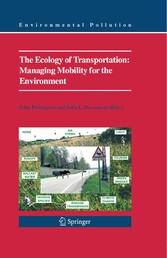Search and Find
Service
CHAPTER 5: THE TRANSPORT AND THE SPREAD OF LIVING AQUATIC SPECIES (p. 77-78)
DAN MINCHIN
Marine Organism Investigations, 3 Marina Village, Ballina, Killaloe, Co Clare, Ireland
1. Introduction
The distribution of aquatic species was brought about by natural processes but the development of human transport has meant that species can be transported around the world, both deliberately and accidentally. Dissemination of species by rapid modern transport results in a greater survival rate of transported organisms. Fast modern transport is also essential for the much of the present day worldwide trade in living aquatic species (e.g. fish, shellfish). This trade may also result in accidental transfers of other species, either with the designated cargo, or by direct association with the transport vector (Carlton 2001; Williamson et al. 2002; Minchin & Gollasch 2002).
Increased world trade particularly over the past 50 years, together with increases in human populations, improvements to transport and increases in prosperity, has led to an increasing number of organisms being inadvertently transmitted (Carlton 1988; Gollasch 1996; Hewitt 2002). These include many aquatic organisms, for example, species used in culture for angling airports, which then act as centres for further distribution. This distribution may involve one or more forms of transport. Such trade fluctuates in accordance with economies, political events and changing environments. Redistribution of products from main ports of entry to smaller hubs at local level is increasing. The development of new marinas, garden-centres, aquarium shops as well as outlets for speciality foods (Padilla & Williams 2004) has led to transport networks that have the potential to disperse species rapidly over a wider geographical area.
Open markets and general trade seldom consider the consequences arising from the ‘leakage’ of biota between different biological provinces. Improved codes of practice and legal enforcement are likely to reduce deliberate introductions into to the wild. However, a general awareness of how transport acts in the spread of species is also required, so that legislation can be put into place to prevent the accidental movement of species. Unlike most terrestrial species, aquatic species, apart from large unusual species, are most often spread beyond an area feasible for eradication measures when first found. Where management is possible the action taken will very much depend on the life history stages and mode of life of the species as well as the vectors (both natural and otherwise) involved in their spread. In this account some examples of species carried by different transport modes with options for management are discussed and some future scenarios are considered.
2. Ships and other floating craft
All vessels have the capability of transmitting species including small craft (see Chapter 6). Usually this is by attachment to the hull or by the uptake of water to ballast tanks (to stabilise the ship while in transit). Either type of transmission can lead to species with very different life-histories, from virus to fish, becoming broadcast (Gollasch et al. 2002). Recent studies et al. 2003). Most of the international trade passes through one or more hubs, usually ports and bait, ornamental species and those intended for direct human consumption (Warren-Rhodes have shown that mobile species are not only transported in ballast water, but can also be carried with the assemblages attached to ships’ hulls (Minchin & Gollasch 2003). One feature of ships is that on leaving a dry-dock they have opportunity to accumulate organisms by progressive fouling, or in ballast water, with each port visited. Ports are the principal regions through which trade passes. Shipping has been a basis for this trade over some thousands of years. However, early trade was based on small vessels making occasional, often seasonal journeys, to specific areas where there was shelter. Conditions in port regions were not greatly modified.
All prices incl. VAT













